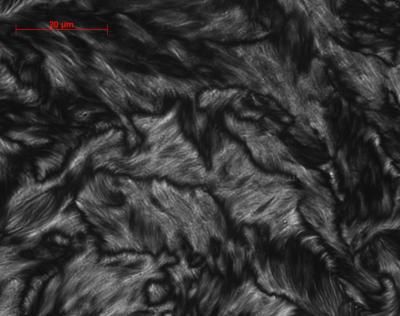World's brightest X-ray machine comes online at SLAC
The $420 million Linac Coherent Light Source will snap photos at the molecular level of everything from proteins to semiconductor materials
Advertisement
After years of design and construction, the world's brightest X-ray machine has come to life at the SLAC National Accelerator Laboratory, in the hills near Stanford University.

This photo shows the inside of the Undulator Hall, before installation of the undulator magnets.
Brad Plummer, SLAC
The mile-long machine produces a laser beam made of X-rays instead of visible light. Its laser bursts are so bright and so brief that researchers will use them as an ultrafast stop-motion camera to capture the minute details of things previously unseen, such as the arrangement of atoms in metals, semiconductors, ceramics, polymers and proteins.
"So you can look at a process like photosynthesis one molecule, one step at a time," said SLAC Director Persis Drell. The laser is expected to have wide-ranging impacts on medicine, advanced energy research and other fields.
"This is far and away the brightest X-ray source ever built," said John Galayda, SLAC's director of construction for the laser, which produced it's first light last week.
The $420 million Linac Coherent Light Source is now the main ingredient on the scientific menu at SLAC. After four decades of using the lab's two-mile-long linear accelerator to produce high-energy electrons for cutting-edge physics experiments, researchers have turned their attention to using the famous accelerator to create the X-ray laser. The LCLS "will in a major way define our scientific program for the next decade," Drell said. The extremely short wavelengths of the LCLS give the laser the ability to take freeze-frame snapshots down to the atomic level.
The laser will be a game-changer for scientists who want to study chemical reactions at their most basic. Until now, watching atoms as they formed or broke molecular bonds was essentially observing a blur. "You can see the beginning state, you can see the end state and then something happens in the middle and it's a blur," Galayda said. But the high resolution provided by the X-ray laser will allow researchers to compile a series of snapshots of molecules as they change shape during reactions, and then string those images together to create a never-seen-before movie.
Freeze frames from the 19th century
Stop-action imaging at Stanford has roots going back more than a century. Around 1872, Eadweard Muybridge began making stop-motion photographs of people, animals and trains on Leland Stanford's stock farm. He is famous for photographs that proved that all four of a horse's hoofs are off the ground at the same time during a gallop.
The LCLS creates its laser by accelerating a beam of electrons through a series of magnets in a room known as the Undulator Hall. The alternating magnetic field created by the magnets causes the electron beam to wiggle from side to side as it passes by. As the electrons change course, some of their energy is converted to X-rays, which are organized into a coherent laser beam.
When the laser was tested inside its tunnel last week, it worked on the second attempt, sooner than many of the participants gathered in the control room expected. "We were standing there, dumbfounded, looking at the light," said Galayda. "It was beautiful. It was the greatest experience of my life."
Other news from the department science
Most read news
More news from our other portals
See the theme worlds for related content
Topic world Synthesis
Chemical synthesis is at the heart of modern chemistry and enables the targeted production of molecules with specific properties. By combining starting materials in defined reaction conditions, chemists can create a wide range of compounds, from simple molecules to complex active ingredients.

Topic world Synthesis
Chemical synthesis is at the heart of modern chemistry and enables the targeted production of molecules with specific properties. By combining starting materials in defined reaction conditions, chemists can create a wide range of compounds, from simple molecules to complex active ingredients.





























































